How to Turn on and Use Airplay on Mac
AirPlay is an Apple-developed protocol to allow streaming, extending, or mirroring screens and transferring content like device screens, audio, video, photos, etc) between devices on the same local network.

AirPlay is the successor of Air Tunes that only supported audio and the current version of AirPlay is 2.0 was released in 2018. AirPlay feature is quite handy while giving presentations or sharing content on a large display.
To use the AirPlay feature, the originating device must be an Apple device but the displaying or receiving devices can be an Apple device or an AirPlay-compatible 3rd party device (like a Samsung TV). You can AirPlay to stream the entire screen (technically, it will be called mirroring) or just an application’s display.
Show the AirPlay Icon on the Menu Bar of Mac
The first step in the process to Stream using the AirPlay is to show the AirPlay icon (if not shown) on the Menu bar of your Mac and you can achieve the same by following the undermentioned steps:
- Launch the System Preferences of your Mac and open Displays.
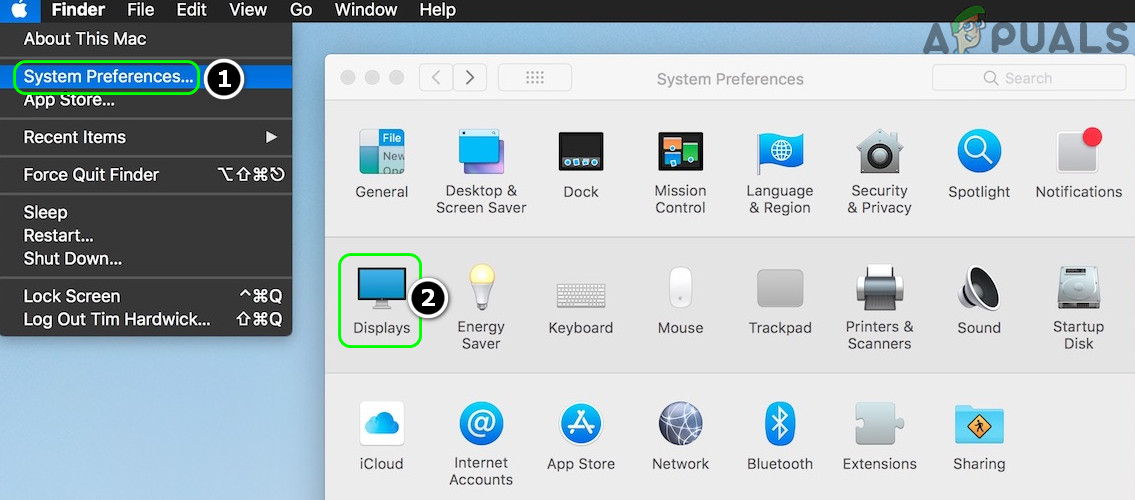
Open Displays in the System Preferences of Mac - Now, checkmark the option of Show Mirroring Options in the Menu Bar When Available.
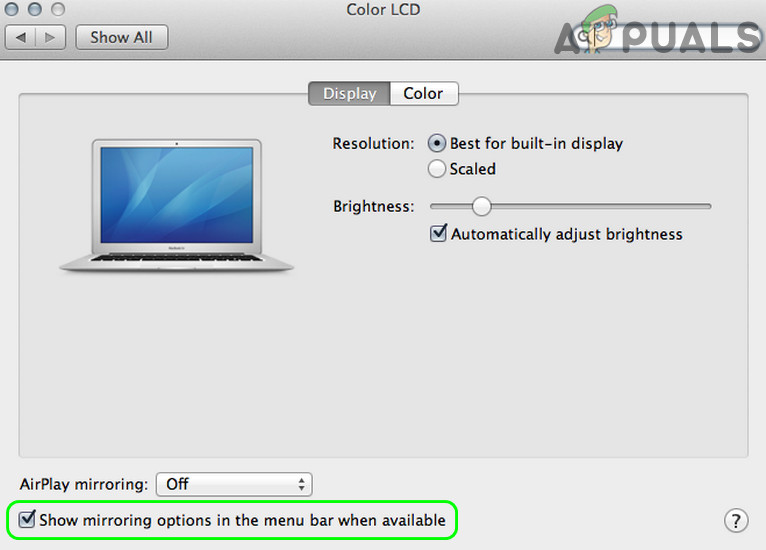
Enable Show Mirroring Options in the Menu Bar When Available
Hurray, you have shown the AirPlay icon on the Menu bar. Do not worry, if, at step 2, you see the AirPlay Display off because it is just telling that the AirPlay is not streaming at the moment.
How to Use AirPlay on Mac
You can turn on AirPlay by 3 methods on a Mac device (we are assuming that you have a compatible receiving device, connected to the same Wi-Fi network). For some devices, you may have to enable receiving of AirPlay content (for example, for an Apple TV, you may have to enable AirPlay in the Settings of the TV and select Anyone on the Same Network).

Keep in mind that whatever method you use, you may use the option of Match Desktop Size to resize the display of the receiving device. Also, the AirPlay feature is only supported on 2011+ Macs.
Use AirPlay From the Menu Bar of Mac
The instructions slightly differ for the macOS 11+ and MacOS10-.
For Mac OS 11 (Big Sur) and Later
- Click on the Control Center icon (the icon having two tiny toggle switches) on the Menu bar and in the menu show, open Screen Mirroring.
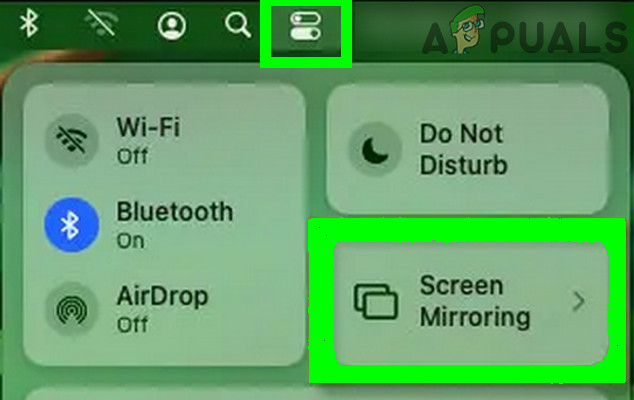
Open Screen Mirroring in the Control Center of the Mac - Then, in the list of devices, select the device to which you want to stream (you may have to enter a passcode).
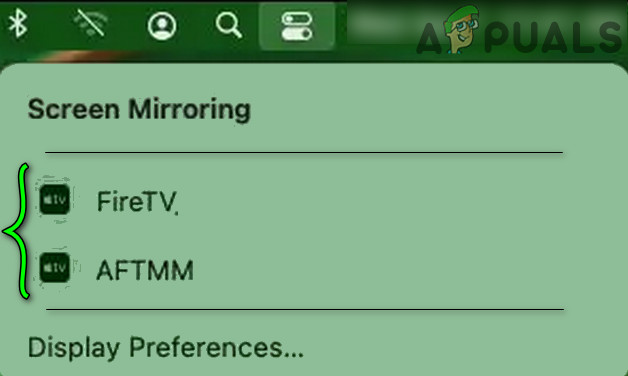
Select the Device to Which You Want to Mirror Using AirPlay - Now you will notice a blue screen mirroring icon on the menu bar till the screen mirroring ends. If you want to use the receiving display as a separate display (or in other words, want to extend your display), click on the blue screen mirroring icon and select Use as a Separate Display. You can drag and drop the applications to a separate display.

Use the Displaying Device as a Separate Display in the Mac’s AirPlay - When you are finished with the screen mirroring, click on the blue screen mirroring icon and select your device (the device with the blue icon).

Disconnect the AirPlay from the Device
For Mac OS 10.5 (Catalina) and Earlier
- Click on the AirPlay icon (the rectangle icon with a small triangle over it) and select the device (you may have to enter a passcode).

Select Your Device to AirPlay to - Now the AirPlay icon will turn blue and if you want to use the display as separate, click on the blue AirPlay icon and select Use as a Separate Display.

Use the Device as A Separate Display in AirPlay - Once you are done with screen mirroring and want to stop the AirPlay, click on the blue AirPlay icon and select Turn AirPlay Off.
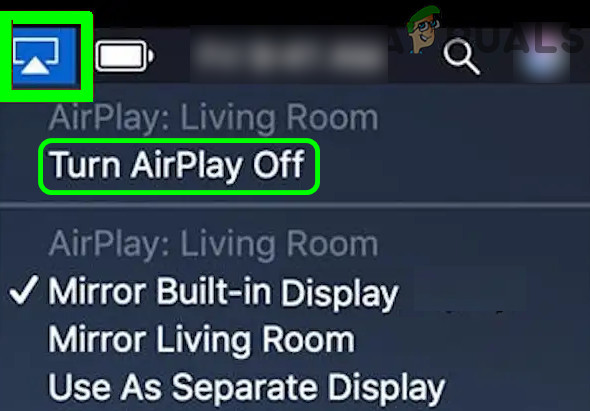
Turn Off AirPlay
Use AirPlay From the Displays Menu of the Mac
- Launch the System Preferences and open Displays.
- Now click to expand the dropdown of AirPlay Display and select your desired device (if asked to, do not forget to enter the passcode).
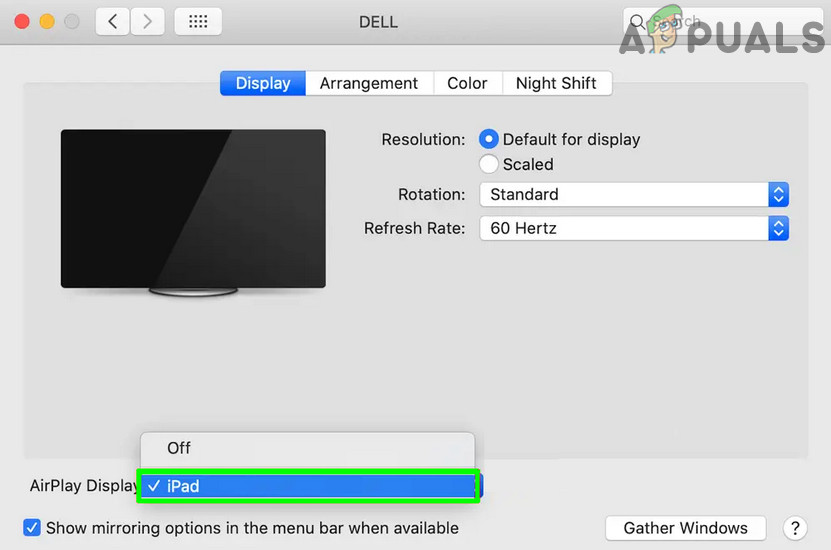
Select the AirPlay Device Through the Mac’s Displays Menu - Once you are done with the screen mirroring and want to end it, click on the AirPlay Display and select Off.
How to Use AirPlay from an Application’s Windows
For the Music (or Audio Only) App
- In your Music app (or any other audio or music app), click on the AirPlay icon (the AirPlay icon is located near the right end of the Menu bar of your Mac) and then select the desired device.

Use the AirPlay Through the Music App - Now launch the System Preferences and open Sound.
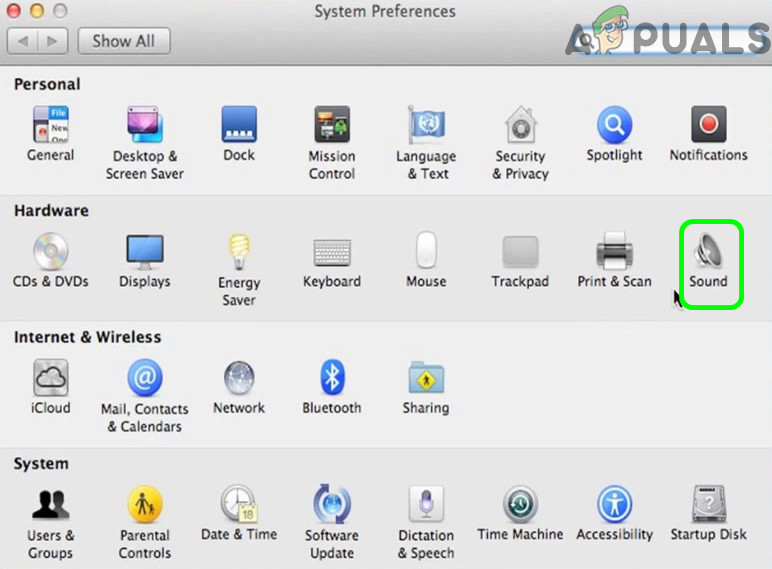
Open Sound in Mac’s System Preferences - Then navigate to the Output tab and select the device as the audio output device (to quickly switch between the audio devices, checkmark the option of Show Volume in Menu Bar).

Select Your Desired Sound Device and enable Show Volume in Menu Bar
To Play Video or Any Other Content
- Launch the application (or website) from which you want to play video and in the playback controls, click on the AirPlay icon.

Select Your Desired Video Device in AirPlay - Now select the desired device and if asked to, make sure to enter the passcode.
How to Troubleshoot Common AirPlay Issues
You may try the following if your Mac is not letting you turn on Airplay:
- Check if the OS/firmware of the devices is updated to the latest built.
- Make sure your devices support AirPlay like you can use AirPlay on MacBook Pro but not on the 1st and 2nd generation of the MacBook Pro.
- Check if your Mac and the displaying or receiving devices are connected to the same Wi-Fi network.
- Ensure your system’s firewall is allowing the AirPlay connection (you can check the same by disabling the firewall).
- Check if the AP isolation in the router settings is not causing the issue.
- If you are trying to connect to an iPad, make sure you use the same Apple ID on the iPad and Mac.
If nothing works, then restart all your devices and networking equipment to troubleshoot the airplay issue.





